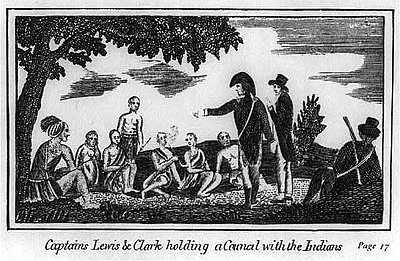

Due to the effects of weathering, it has renovated on two occasions and now has a glass case placed over it.Ī U.S. Looking across the commercial vendor and Federal Interagency Working Group area from Pompey’s Pillar.Ĭlark, too, left his mark at Pompey's Pillar, engraving his name and the date into the stone still visible, his mark is probably the only extant on-site evidence of the entire expedition. Army Corps of Engineers Lewis and Clark encampment depicting how Jeffersonian-era soldiers lived outdoors.

Army Corps of Engineers Lewis and Clark encampment on the Yellowstone River.Īnother view of the U.S. The young lady proved to be extremely talented, sparking some discussion of her replacing Private Gibson as one of the expedition’s fiddle playing members.ĭrawn by the sounds of Gibson’s fiddle playing, another young visitor arrives at the U.S. Local resident borrows Private Gibson’s musical for a brief session. Gibson proved to be one of the best hunters in the expedition. Gibson, born in Pennsylvania, was living on the Kentucky frontier by the time Clark had recruited him in Liousville. Army Corps of Engineers interpreter portraying Private George Gibson, a fiddle playing member of Lewis and Clark’s permanent party. Army uniforms, they previously appeared at the Great Falls Lewis and Clark event as well as numerous other local gatherings during the Bicentennial Commemoration.Īnother view of Montana’s Lewis and Clark Honor Guard.Ī U.S. Interpreters from the Montana’s Lewis and Clark Honor Guard also attended the Signature Event at Pompey’s Pillar. They also lived in the Dakota Territories for a period of time before finally settling along the Missouri and Yellowstone Rivers in Montana. The Crow people, who originally lived in the upper Midwest, began migrating further west during the late fourteenth century. The Crow tribe is known as the " Apsáalooke ", which means "children of the large-beaked bird”, a name given to them by the Hidatsa. The northwest boundary of the reservation is about ten miles from Billings. The 1.8 million acre Crow Reservation is located in south-central Montana, bordered by Wyoming to the south. The Crow nation was also well-represented at the Pompey’s Pillar event.

Visitors to Pompey’s Pillar were able to attend a concert given by Air National Guard Band of the Northwest. The sculpture is named “Sacajawea’s Arduous Journey.” It portrays the native girl stepping up a hill, a long staff in her hand and the baby nicknamed “Pomp” by William Clark is strapped to her back.Īnother view of the area housing commercial vendors and Federal Interagency Working Group tents, with the newly opened Clark on the Yellowstone Interpretive Center visible in the background. The Corps is currently responsible for over 1100 miles of the waterway used by Lewis and Clark to reach the Pacific Northwest.Ī very striking statue of Sacagawea created by artist Carol A. Army Corps of Engineers also manned an exhibition booth at the Signature Event. The Montana Army National Guard’s 443d Quartermaster Petroleum Company provided support to the Signature Event.Īnother view of the National Guard presence at Pompey’s Pillar. This rock which I shall call Pompy's Tower is 200 feet high and 400 paces in secumpherance and only axcessable on one Side … The nativs have ingraved on the face of this rock the figures of animals & near which I marked my name and the day of the month & year." Clark named the rock formation after Sacagawea’s infant son. William Clark, who separated from the rest of the party for a brief period, wrote in his daily journal on 25 July, 1806 that he, “ …arrived at a remarkable rock situated in an extensive bottom… this rock I ascended and from it's top had a most extensive view in every direction. The tents belonging to Federal Interagency Working Group participants and commercial vendors were temporarily erected at Pompey’s Pillar for the July 2006 Lewis and Clark National Signature Event. The Pillar overlooks the Yellowstone River about 25 miles east of Billings, Montana.

Pompey's Pillar National Monument, a National Historic Landmark, is managed by the Bureau of Land Management, U.S. The Corps of Discovery reached Pompey's Pillar on July 25, 1806.


 0 kommentar(er)
0 kommentar(er)
